Downloaded 118 times
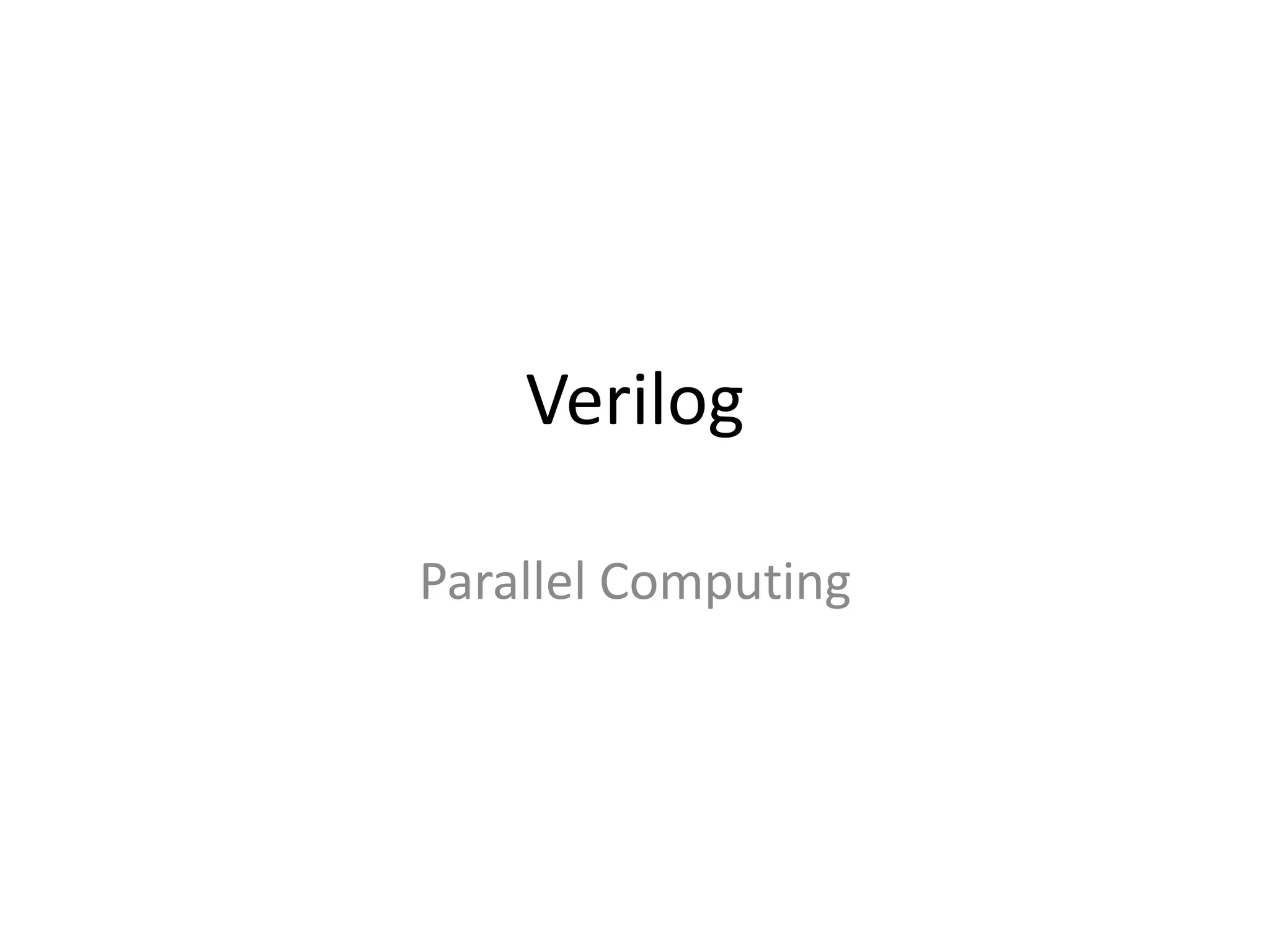
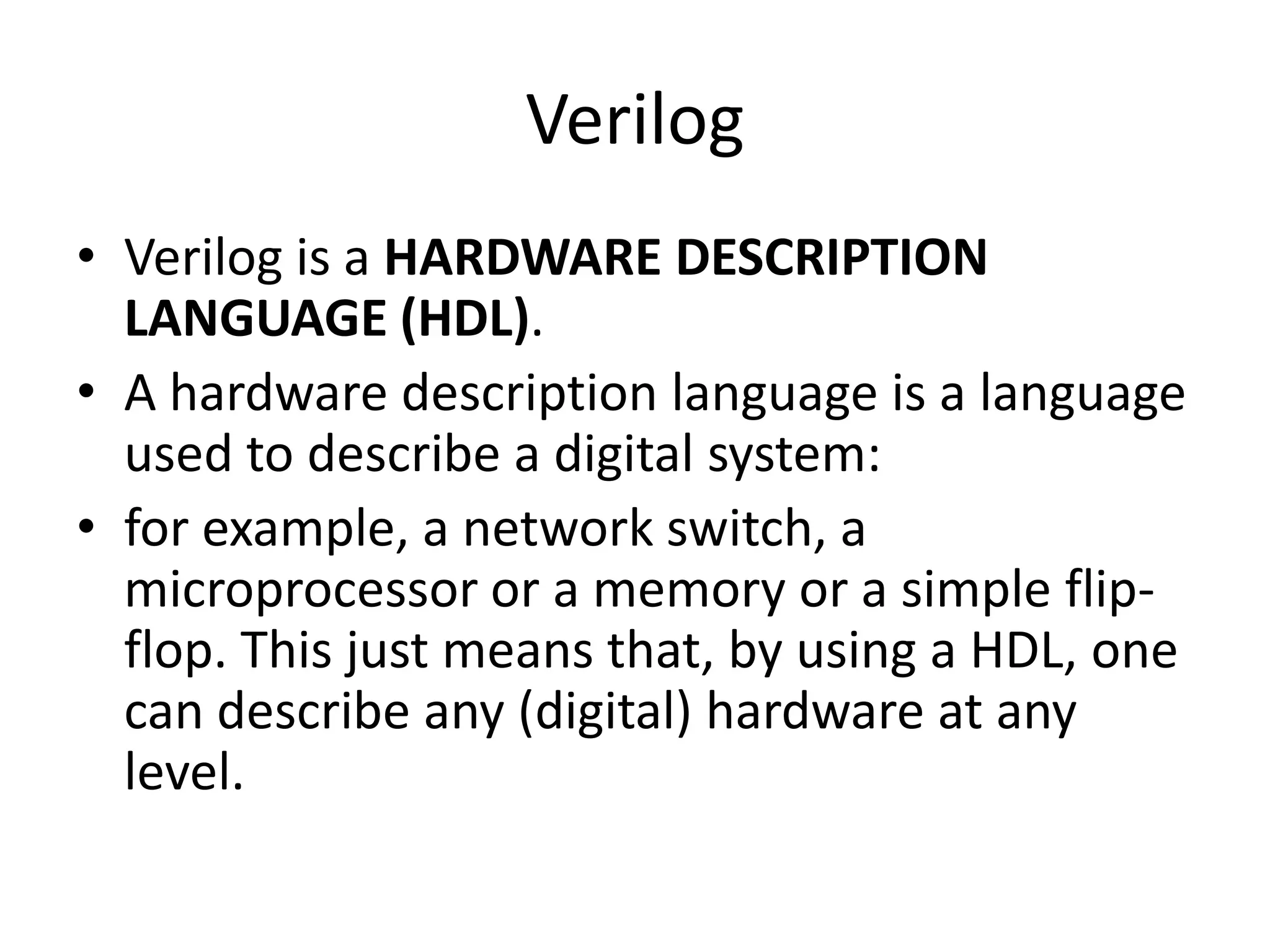
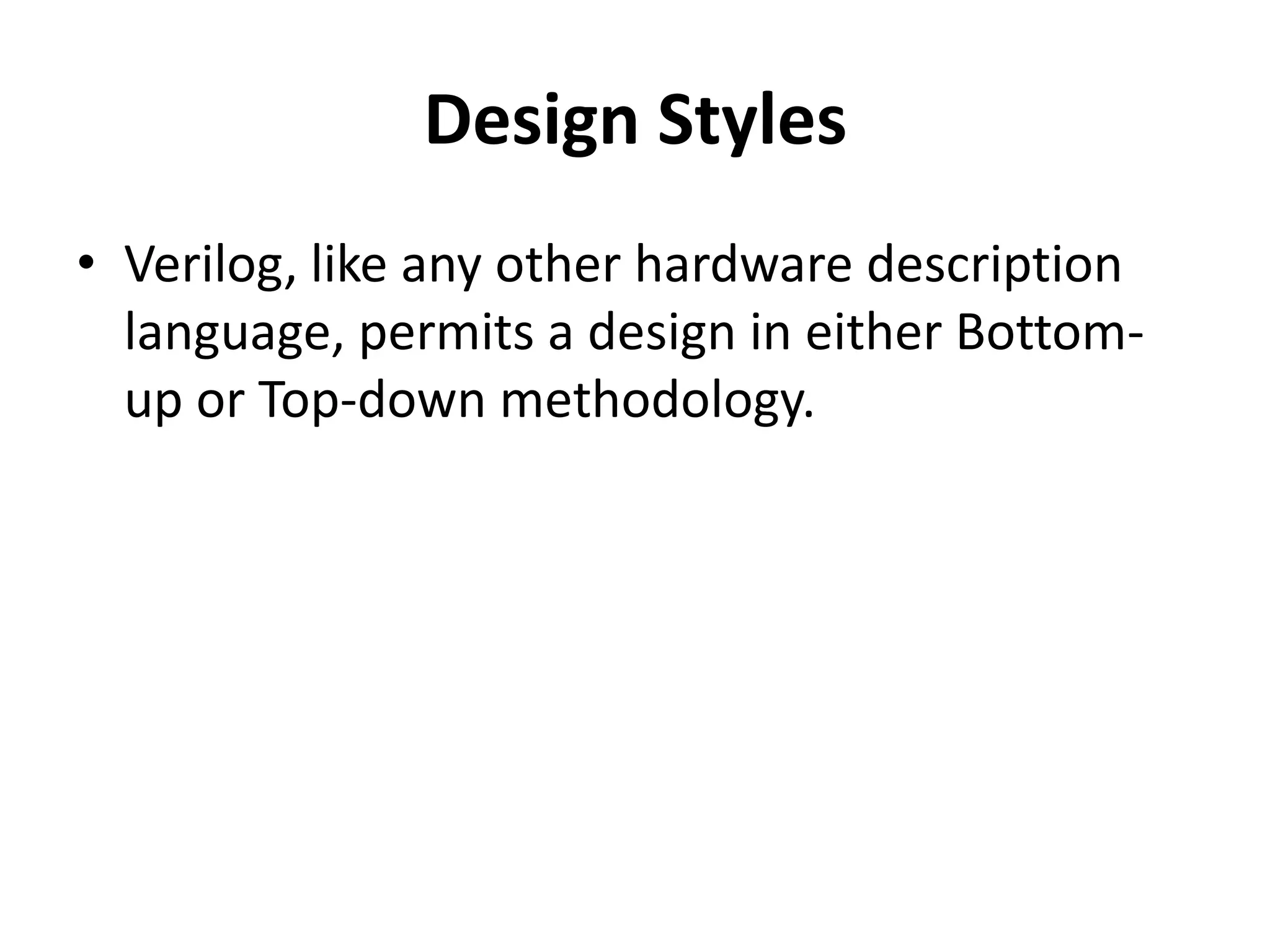

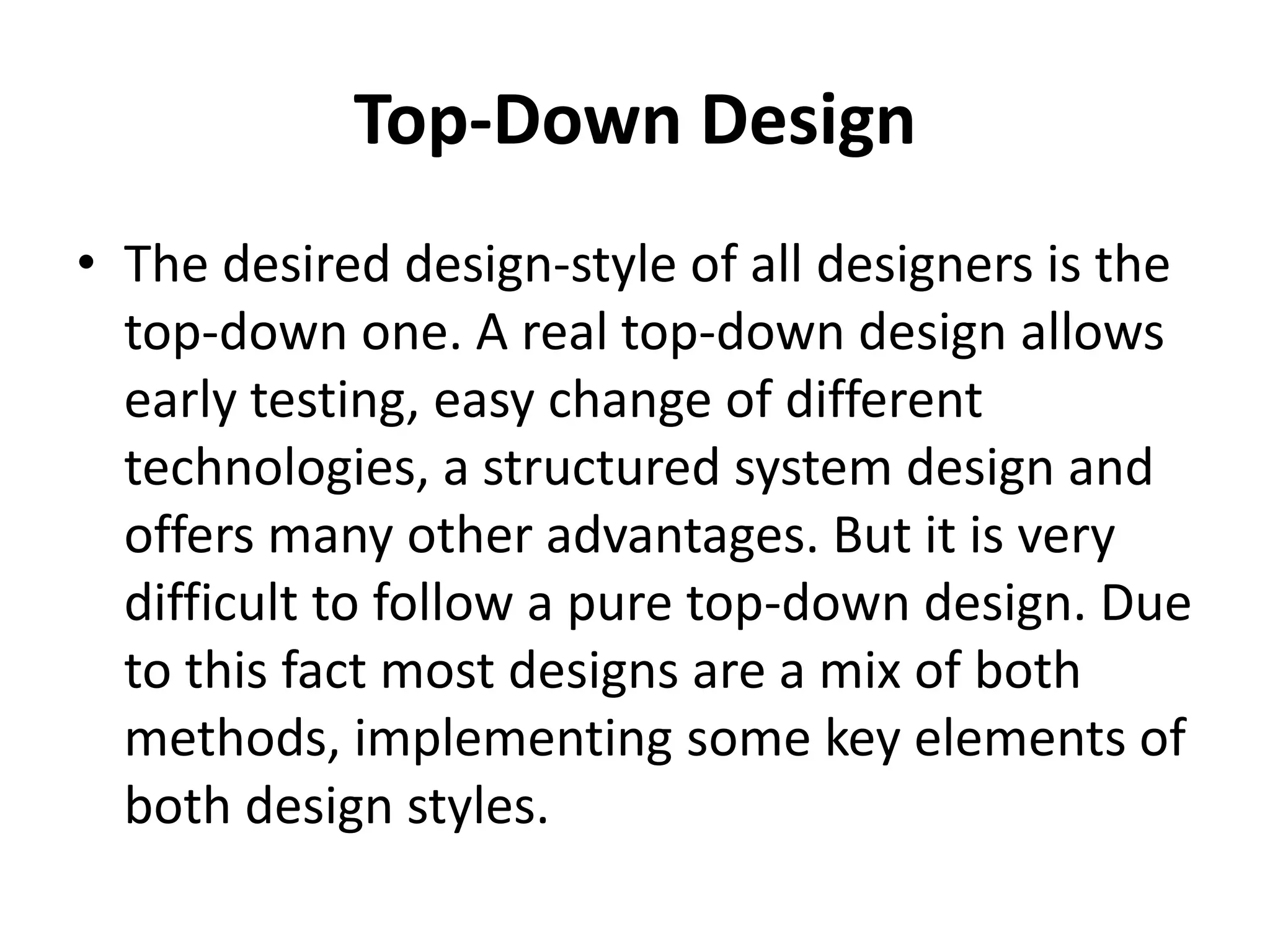
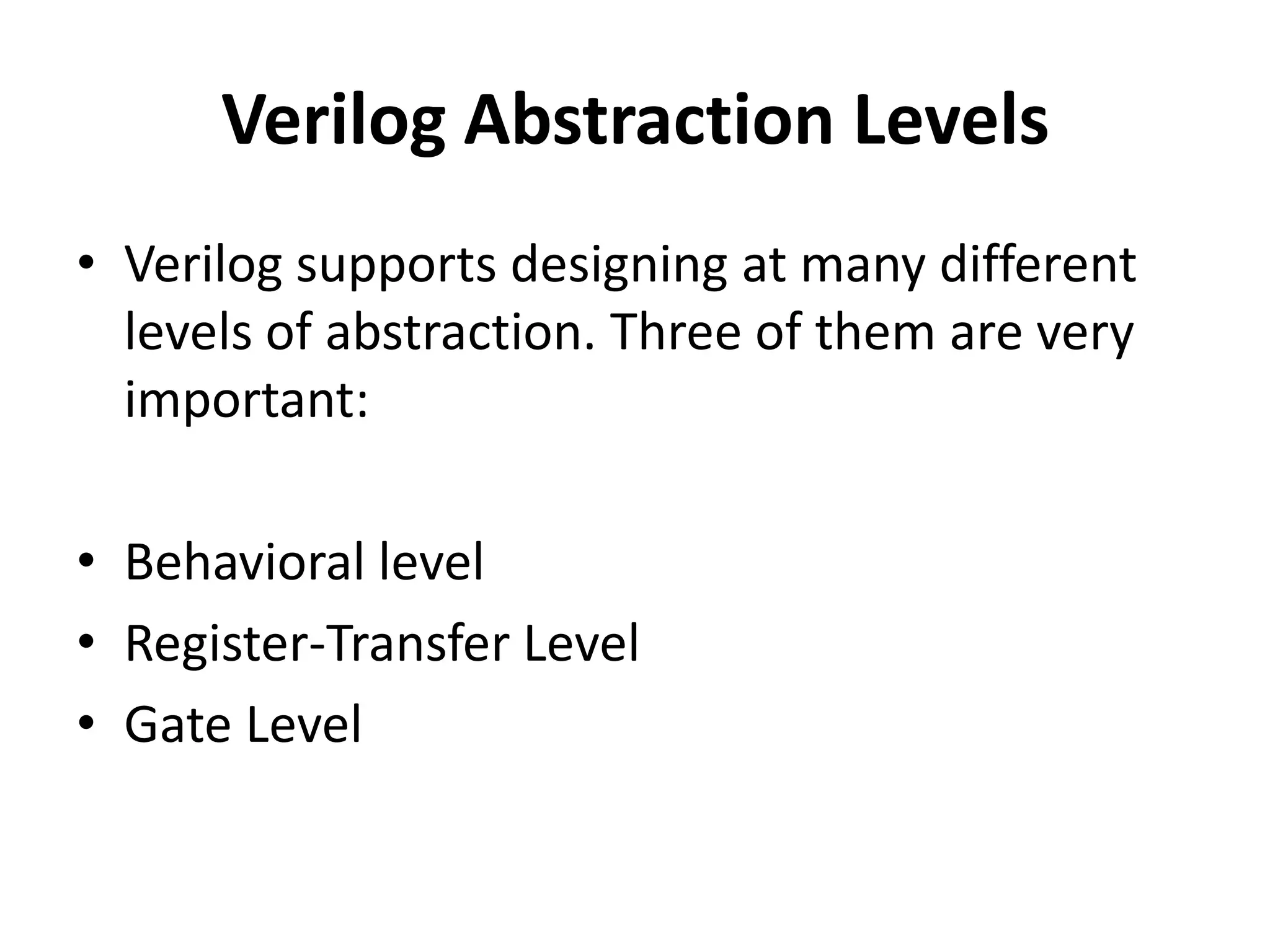

Verilog is a hardware description language that can be used to describe digital systems like microprocessors, switches, and memory. It allows designs to be created using either a bottom-up or top-down methodology. Bottom-up designs are built up from individual gates, while top-down designs start at a higher level and are easier to change. Verilog supports designing at different levels of abstraction like behavioral, register-transfer, and gate levels.







Introduction to Verilog as a Hardware Description Language (HDL) for digital systems.
Verilog describes digital systems like microprocessors and memory at any level using HDL.
Verilog allows for design using Bottom-up and Top-down methodologies in electronic design.
Traditional bottom-up design works at gate-level, challenging due to increasing complexity in designs.
Top-down design allows early testing and structured design; often a mix of methods is used.
Verilog supports multiple abstraction levels: Behavioral, Register-Transfer Level, and Gate Level.